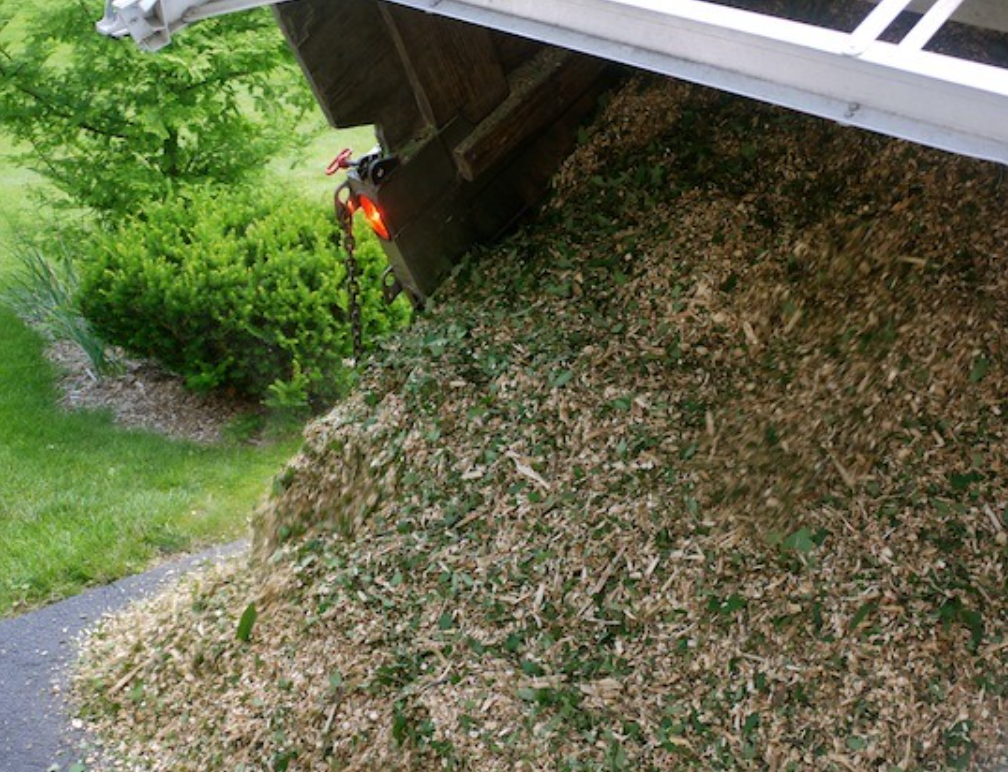I've been converting a bunch of grass yard into useful garden/rewild space for about 3.5 years now. I started with about three quarters of an acre of grass and have planted out the majority of that with a mix of native plants, food plants, and wildflowers. The yard space I'm converting was just mowed grass for about 30 years prior with a few mature trees. The soil sucked, with maybe 3-4 inches of soil followed by sand. I have no actual training and not much experience so I wasn't sure how this would go at first, but seeing things popping to life in the 4th spring here has been satisfying. I thought I'd share some bullets here because I feel what I've done has been pretty effective and cheap.
A good resource of what's actually going on in soil is all of Redhawk's soil threads. Soil isn't dirt, it's a whole world in and of itself. Soil is more a process that happens than a substance that you can scoop out and handle. Building soil means encouraging diverse life to occur in the ground. That diversity of life then helps any plants/seeds you grow take off. You want plants to move into a bustling city - that community will make them strong. If you go the other way around and try to just grow plants without good soil, then your plants are showing up in a ghost town and they'll be lonely.
The technique I've used the most for soil growth is dumping huge amounts of woodchips all over the place. I live in a place where there are lots of arborists, so I made friends with a few and asked them to start dumping chips at my place. Arborist woodchips are very good soil food for a few reasons: they include twiggy bits and leaves, so they have way more nitrogen than woodchips from a bulk material store, they are a variety of sizes so they break down at different rates, and they are someone else's waste product so you can get them cheap/free.
-
Once you get chips, dump them in places you want soil in thick layers. 12" will smother grass without any cardboard or anything else underneath. 16" is fine but don't do more than that or it prevents oxygen from getting into the soil.
-
don't dig woodchips in. This will fuck up your soil chemistry for a year or so and it's also way more work. Cut the grass as much as you can and then just dump the chips on top. 6" tall grass is fine, shorter is better, taller than 6" and you will have a hard time truly smothering grass, so mow/cut if needed first
-
bulk woodchips look a bit stupid at first but it will compact and the colours will bleach out to brown and it looks fine within a month.
-
About 1' of chips will turn into 1" of soil after 4-5 years.
-
The best time of year to lay them down initially is fall/early spring because rain will help get everything soaked and will jumpstart fungus and bugs doing their thing.
-
around existing plants, pile chips 6-12" high but make sure they are pulled back from stems/trunks by 6-12". Don't make mulch volcanos around trees, shape them more like a bowl with the tree sticking out of the middle.
-
during the first year you can't direct sow anything into chips. After the first year you can (and should). Nitrogen fixers like clover are great to sow because the woodchip bed will be hungry for nitrogen for a year or two after you put it down. If you don't seed anything after the first full year you will get a bunch of random weeds because the soil will be decent by then. It's better to plan to fill the space with whatever you want.
-
you can plant vegetable starts into woodchips after the chips are about 6 months old (as long as they've been wet and the decay has kicked off). If you plant perennials, dig the hole deeper than normal to account for woodchip settlement.
-
a couple full years after chip placement, you can direct sow anything, not just easy seeds. Well not carrots or things that you want a straight taproot, but most things.
-
make mushroom slurry to jumpstart decay and soil building. Collect whatever random mushrooms you can find. Wear gloves if mushrooms in the area can be poisonous to touch. Collect buckets of rainwater/pond water/no chlorinated water (or leave chlorinated water outside for a couple days, or boil/carbon filter water treated with chloramine). Blend mushrooms with rainwater into a grey/brown slurry, dilute into larger buckets, pour mixture over woodchip beds, especially in shady/wetter spots that mushrooms like. Mushrooms that grow wild will take without any fussing about. When they do, keep propagating them elsewhere.
-
make aerated compost tea to boost microbial diversity. Mix non chlorinated water per above with some molasses, put a cup or so of healthy forest soil, compost, worm castings into a sock/nylon, aerate 12-48 hours with an aquarium stone, dilute the mixture 10:1 and pour around the drip line/roots of plants, trees, shrubs, veggies. This stuff doesnt last so you have to use it as you make it. By doing this you spread microbial diversity, which helps your soil health a lot.
-
this should be higher up, but be mindful of dust/spores when you are shoveling chips out of a big pile. Depending on wood species, time of year, how long they've sat in a pile, wood chip piles can start decaying pretty quick because they'll heat up and bacteria generally likes the warmth. That's mostly good but when you dig into it and there's a whole shit load of dust, that's a sign that you're spreading spores. Either wait til its rainy to move them or wear a n95 mask. Some spores can cause weird respiratory illnesses or worse.
-
chips get way heavier after they get soaked, so best to move them soon after they've been dumped unless you want the workout.
All the above is pretty cheap if you're in the right place. I've moved something like 750 yards of chips around here. That will turn into about 75 yards of great soil. Buying that would cost me $7500 or something, plus I got good exercise.
here's some woodchip glam shots, caption follows the picture

damn look at the mycelium here. this is about 8-9 month old chips

this material is mostly about 3 years old with some new stuff chucked on top.

this is the first bed I built about 3.5 years ago. this wasn't 100% woodchips but a lot of it was. it's now really nice looking soil.

pretty typical cutaway in a path. I dumped about a foot of woodchips originally, then added about 6" 2 years ago. making thick layers of woodchips for paths is great for a whole bunch of reasons. they prevent mud, they prevent soil compaction underneath even with mild vehicle use, and paths are a good way to grow soil next to your beds. you put down a bunch of woodchips next to a bed, let it sit a year or so, then rake off the top inch of chips and shovel what's under into your beds. then replace with fresh chips.

mycelium in a pretty new cedar bed. some people talk about allelopathy of cedar inhibiting growth of stuff and maybe it does, but it doesn't seem noticable.

strawberries fucking love these beds. they are excellent groundcover. they spread rapidly, they make delicious berries, and they're hardy. if you want more green/less berry then grow wild species like coastal/woodland strawberries. if you want the berries, buy a 6 pack of plugs from the nursery and wait a year or make friends with literally anyone with a strawberry patch and they'll give you plugs. I started with about 40 that I got from a friend 3 years ago and I don't think I could possibly give enough away to have less strawberry plants now.

wine cap mushrooms are a great thing to grow also. buy or borrow one thing of spawn for $30 or so, put it in fresh woodchips, then propagate them into other woodchip patches by either digging out spawn and spreading it around, or even easier, by picking the mushroom and pulling up some of its 'roots/the stump' and burying the roots/stump a few inches down somewhere else. wine caps are really easy to ID, they're enormous so they're easy to find, they're tasty, and their mycelium is really aggressive at spreading around so it's easy to keep them going.


